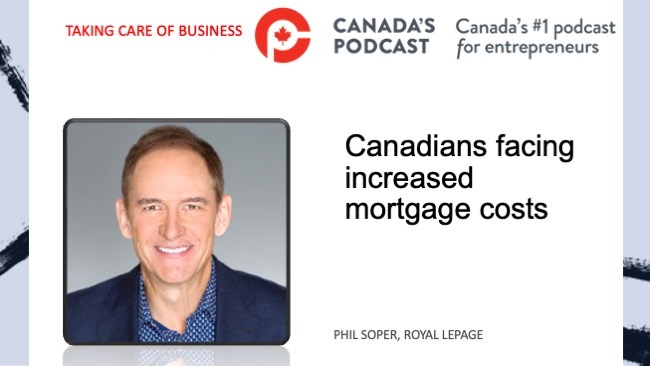Total consumer debt has climbed to $2.36 trillion, an increase of 7.3 per cent in Q3 2022 compared to last year according to Equifax Canada’s most recent Market Pulse consumer credit trends and insights report.
Average non-mortgage debt per consumer rose to $21,183, the highest level since Q2 2020. Following a 3.1 per cent rise in the number of credit-active consumers, overall non-mortgage debt surpassed pre-pandemic levels and stands at $599.9 billion, up 5.3 per cent from Q3 2021 and up 1.4 per cent from Q3 2019, added the report.

Mikhail Nilov
“Factors including population growth from immigration combined with pent-up demand from the pandemic on things like vacations will be contributing to the overall rise in credit active individuals,” said Rebecca Oakes, Vice-President of Advanced Analytics at Equifax Canada. “This is a story of two sides though, as consumers also tend to rely on credit more during tough times. Part of the new credit uptake we’re seeing is likely from people who are feeling financial stress from sustained increased living costs and are taking on more debt as a result.”
New-to-credit consumers (those with less than one year of credit participation) increased by 37.4 per cent when compared to the same period in 2021, and rose 16.7 per cent when compared to pre-pandemic Q3 2019, said the report.
Over the last quarter, almost 1.5 million new credit cards were issued, an increase of 22.5 per cent from Q3 2021 and up 6.2 per cent from the pre-pandemic period of Q3 2019. Credit card spending is at an all-time high when compared to the same period in previous years. For consumers with a credit card, average monthly credit card spend was almost $2,447 in Q3, up by 17.3 per cent compared to Q3 2021 and 21.8 per cent from the pre-pandemic (Q3 2019) period. Credit card balances rose close to pre-pandemic levels, up 13.8 per cent in Q3 2022 compared to the lows of Q3 2021, explained the report.
“Credit card demand has risen aggressively after being low for more than a year. New card growth was seen across all consumer segments, including sub-prime segments,” said Oakes. “Consumers have been making strong payments, but we are starting to see a shift in payment behaviour especially for credit card revolvers — those who carry a balance on their card and don’t pay it off in full each month. Average payment rates are at a lower level than 12 months ago for this group.”
The pace of mortgage debt growth has slowed due to reduced home sales and the resultant fall in new mortgage volume. New mortgage volume dropped by 22.7 per cent when compared to Q3 2021 and by 14.6 per cent when compared to Q3 2019. Mortgage origination dropped below pre-pandemic numbers for the first time this quarter when compared to the same time period in 2019. Ontario and B.C. saw the biggest drop in new mortgage originations, 23.6 per cent and 19.7 per cent respectively, when compared to Q3 2019, said Equifax.
“Higher interest rates not only impact consumers opening a new mortgage, but can also impact those reaching the end of agreed mortgage term periods who are looking to renew or refinance,” said Oakes. “More than 1.2 million mortgages are currently three to five years old, and 37 per cent of these have an outstanding balance of more than $250,000. If these consumers do have to renew their mortgage over the next 12 to 18 months, they may experience significantly higher payments than they currently have.”
The number of first-time home buyers dropped by 28.1 per cent in Q3 when compared to the same period in 2021, but their average loan amounts remained two per cent higher than in 2021. Increasing interest rates have had a large impact on monthly payments for this group, rising by 31.4 per cent year-over-year. First-time home buyers are now paying over $500 more in monthly payments for almost the same loan amount as first-time home buyers in Q3 2021, added Equifax.
Age Group Analysis – Debt & Delinquency Rates (excluding mortgages)
| Average Debt (Q3 2022) | Average Debt Change Year-over-Year (Q3 2022 vs. Q3 2021) | Delinquency Rate ($) (Q3 2022) | Delinquency Rate ($) Change Year-over-Year (Q3 2022 vs. Q3 2021) | ||||||
| 18-25 | $8,051 | -3.39% | 1.39% | 32.64% | |||||
| 26-35 | $17,260 | 2.73% | 1.37% | 10.67% | |||||
| 36-45 | $25,974 | 4.56% | 1.03% | 3.81% | |||||
| 46-55 | $32,433 | 3.94% | 0.76% | 2.70% | |||||
| 56-65 | $26,729 | 2.27% | 0.69% | 4.53% | |||||
| 65+ | $14,551 | -0.08% | 0.80% | 4.28% | |||||
| Canada | $21,183 | 2.14% | 0.93% | 7.07% | |||||
Major City Analysis – Debt & Delinquency Rates (excluding mortgages)
| City | Average Debt (Q3 2022) | Average Debt Change Year-over-Year (Q3 2022 vs. Q3 2021) | Delinquency Rate ($) (Q3 2022) | Delinquency Rate ($) Change Year-over-Year (Q3 2022 vs. Q3 2021) | ||||
| Calgary | $24,709 | -2.28% | 1.14% | 0.75% | ||||
| Edmonton | $24,225 | -1.38% | 1.41% | 5.99% | ||||
| Halifax | $20,966 | -0.55% | 0.99% | 0.37% | ||||
| Montreal | $16,469 | 3.50% | 0.80% | 4.44% | ||||
| Ottawa | $19,053 | 3.71% | 0.83% | 6.97% | ||||
| Toronto | $20,215 | 3.09% | 1.14% | 9.78% | ||||
| Vancouver | $22,754 | 3.76% | 0.71% | 6.60% | ||||
| St. John’s | $23,737 | -1.00% | 1.17% | 1.08% | ||||
| Fort McMurray | $38,017 | -1.08% | 1.62% | 3.39% | ||||
Province Analysis -Debt & Delinquency Rates (excluding mortgages)
| Province | Average Debt (Q3 2022) | Average Debt Change Year-over-Year (Q3 2022 vs. Q3 2021) | Delinquency Rate ($) (Q3 2022) | Delinquency Rate ($) Change Year-over-Year (Q3 2022 vs. Q3 2021) | ||||
| Ontario | $21,456 | 3.75% | 0.90% | 9.16% | ||||
| Quebec | $18,551 | 2.35% | 0.62% | 8.18% | ||||
| Nova Scotia | $20,712 | -0.94% | 1.21% | 5.16% | ||||
| New Brunswick | $21,937 | -1.49% | 1.25% | -2.25% | ||||
| PEI | $22,303 | 0.94% | 0.84% | 8.84% | ||||
| Newfoundland | $23,033 | -0.55% | 1.21% | 1.43% | ||||
| Eastern Region | $21,690 | -0.93% | 1.20% | 1.82% | ||||
| Alberta | $24,926 | -2.01% | 1.29% | 3.31% | ||||
| Manitoba | $17,095 | 0.49% | 1.25% | 23.05% | ||||
| Saskatchewan | $22,626 | -0.02% | 1.28% | 12.15% | ||||
| British Columbia | $22,009 | 3.41% | 0.82% | 6.26% | ||||
| Western Region | $22,605 | 0.70% | 1.08% | 6.13% | ||||
| Canada | $21,183 | 2.14% | 0.93% | 7.07% | ||||
* Based on Equifax data for Q3 2022
** Comparable bank loans are installment loans with limits between $5,000 and $100,000
 (Mario Toneguzzi is a veteran of the media industry for more than 40 years and named in 2021 a Top Ten Business Journalist in the world and only Canadian)
(Mario Toneguzzi is a veteran of the media industry for more than 40 years and named in 2021 a Top Ten Business Journalist in the world and only Canadian)
About Us
Canada’s Podcast is the number one podcast in Canada for entrepreneurs and business owners. Established in 2016, the podcast network has interviewed over 600 Canadian entrepreneurs from coast-to-coast.
With hosts in each province, entrepreneurs have a local and national format to tell their stories, talk about their journey and provide inspiration for anyone starting their entrepreneurial journey and well- established founders.
The commitment to a grass roots approach has built a loyal audience with over 120,000 downloads and thousands of subscribers on all our social channels and YouTube. Canada’s Podcast is proud to provide a local, national and international presence for Canadian entrepreneurs to build their brand and tell their story.
Advertising and Sponsorships: At Canada’s Podcast we are here to help you reach your communication objectives and get you results. If you are looking to build your brand, promote your products/services, announce an event, then you will want to reach our extensive data base of owners and entrepreneurs.
Contact sales at: robert@canadaspodcast.com and find out how we can make an impact on your bottom line with our sponsorship packages. Sponsors include: RBC Bank, The Cooperators Insurance, Silicon Valley Bank, eBay, Lethbridge Economic Development, VanHack, CBC Dragon’s Den, The Competition Bureau, The Vancouver Board of Trade and more.





